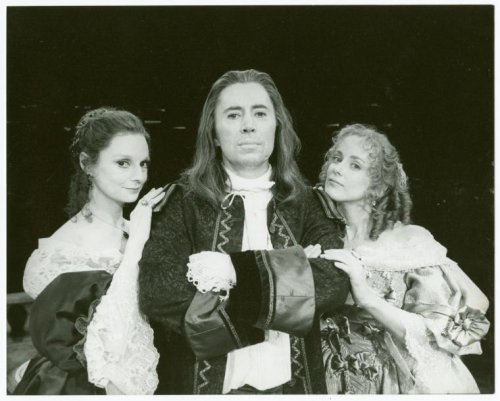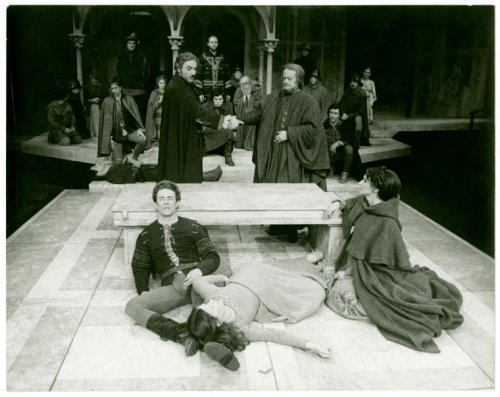
By: Darryl Reilly
Ming Cho Lee’s gorgeous scenic design of marble-accented floors, columns and balconies wondrously conjured up 16th century Venice for the Circle in the Square’s 1977 energetic revival of Romeo and Juliet. Everything about it remains vivid to me as it was the first Broadway show I saw. This was a class outing arranged by a Bronx English teacher as we were reading the play.
In their 30’s, “the first” Paul Rudd and Pamela Payton-Wright were youthful, romantic and dynamic as the couple. I knew Rudd from the television series Beacon Hill and Wright from The Adams Chronicles on PBS. Famous as Madge the Manicurist from the Palmolive commercials, Jan Miner hardily played the Nurse with comic gusto and pathos. Capulet was grand character actor Lester Rawlins who would win a Tony Award the next year for Da. David Rounds, a Tony-winner three years later for Mornings at Seven was a robust Mercutio. Both of them died in their 50’s during the early 1980’s. Future star Armand Assante was a fiery Tybalt. Everyone was immaculately clothed in costume designer John Conklin’s perfect period creations that were heavy on velvet. Director Theodore Mann’s staging was eventful and picturesque.
Mr. Mann co-founded the Circle in the Square in 1951, presenting many notable productions in Greenwich Village. In 1972, the company moved to this brand new underground space on West 50th Street, adjacent to the Gershwin (formerly the Uris). It opened with Eugene O’Neill’s Mourning Becomes Electra, starring Collen Dewhurst. Due to financial problems in 1997, it became a commercial rental theater. A recent tenant was the quirky revival of Oklahoma!
For the previous 25 years, it was a subscription-based institution with a season of plays each usually running in the range of 12 weeks. However, crowd pleasers were extended. George C. Scott’s directed 1984 revival of Design for Living starring Jill Clayburgh, Frank Langella and Raul Julia played for seven months. “The Tiny Todd” 1989 revival of Sweeney Todd starring Bob Gunton and Beth Fowler ran for over five months. In the 1990’s Al Pacino performed in sold-out revivals of Salome and Hughie as well as Ira Lewis’ original play, Chinese Coffee.
With its thrust stage, three-sided playing area and medium size of approximately 840 seats, it offers intimate, unique and up close theatrical experiences. After Romeo and Juliet, I saw many more memorable shows there, and these are a few.
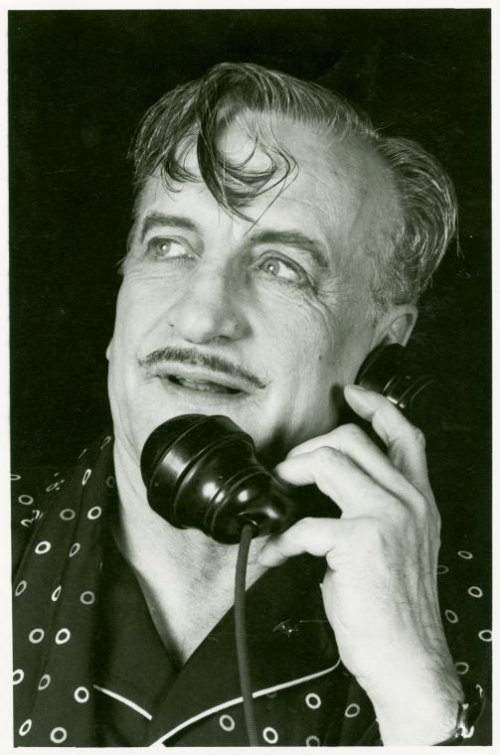
“I’ll never forget that voice!” recalled my mother of seeing George C. Scott in The Andersonville Trial on Broadway in 1960. I was an admirer from seeing his movies from that era including of course Patton, the comedy The Flim-Flam Man, his self- directed screen curio Rage, The Hindenburg and the horror flick, The Changeling. I was also aware of reputation as one of America’s greatest stage actors. My half-price TKTS ticket got me an aisle seat in the last row of the center section for a late preview of Noël Coward’s Present Laughter (1982). The lure was the thrill of seeing Scott live, in this self-directed production.
The lights went down and the play began. Was there a latecomer breathing heavily waiting to be seated nearby? I turned around and there was George C. Scott standing there! His grimacing face was contorted in agony, his body was tense, and his hands were clutched inside the pockets of his silk dressing gown as he waited for his entrance cue. When it came, he instantly transformed into the breezy Gary Essendine, striding down the stairs, his powerful voice booming in an English accent as he took to the stage. Young Nathan Lane made his hilarious Broadway debut here and Dana Ivey, Christine Lahti and Kate Burton were all delightful.

Rex Harrison who had been so disappointingly wan in the 1981 revival of My Fair Lady was electrifying as the wily, bearded and ancient Captain Shotover in Shaw’s Heartbreak House (1983). The awesome cast also included Rosemary Harris, Phillip Bosco, Amy Irving, Dana Ivey, William Prince and Bill Moor.
My adoration of Brian Bedford began with seeing his stupendous Alsceste in the dazzling 1983 Stephen Porter-directed production of Moliere’s The Misanthrope. Carole Shelley and Mary Beth Hurt were bosomy witty ladies and young Stanley Tucci was a foppish valet.
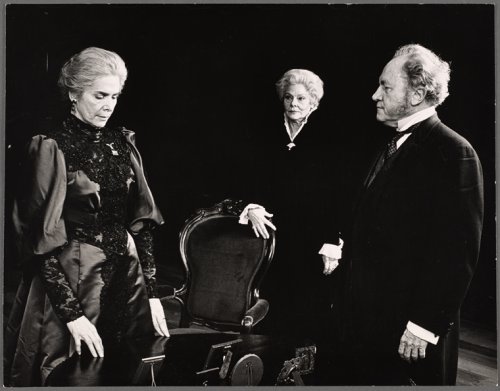
“The betrayal of the trust of a friend is the greatest crime of all!” E.G. Marshall gloriously sniped as Ibsen’s disgraced John Gabriel Borkman (1980). Marshall had a distinguished screen and television career and here he reveled in playing a rare onstage leading role. He put his heart and soul into this performance and his death scene in the snow was so powerful. Equally as entrancing were Irene Worth as his sister-in-law and commanding Broadway mainstay Rosemary Murphy as his bitter wife.
The summer of 1978, I saw the spirited revival of Kaufman and Hart’s teeming 1930 landmark, Once in a Lifetime. The young duo of Treat Williams and John Lithgow were the innocents in Hollywood, George S. Irving was an over the top movie mogul, the always sharp Max Wright was an idealistic playwright and glamourous Jayne Meadows was an imperious gossip columnist. Julia Duffy, Michael Jeter, Jerry Zaks and MacIntyre Dixon were among the ensemble.
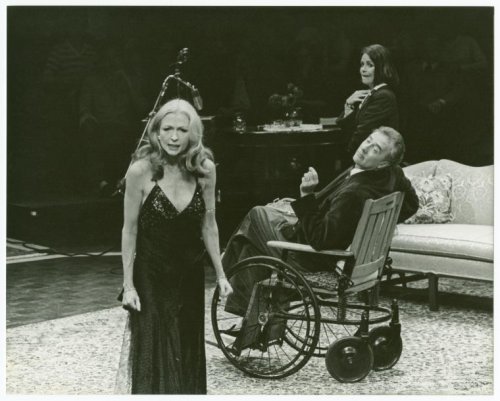
Kaufman and Hart were frothily represented again for the summer of 1980 by theater legend Ellis Rabb in all his glory as the obnoxious Sheridan Whiteside in The Man Who to Dinner. The great Carrie Nye was at her most Tallulah Bankhead as stage star Lorraine Sheldon and Roderick Cook was impeccably grand as the Noël Coward-modeled Beverly Carlton. Both, were nominated in the featured categories by the Drama Desk for this. Leonard Frey was a riot as the Harpo Marx-inspired Banjo and acclaimed stage veteran Maureen Anderman was wonderfully tart as secretary Maggie Cutler. Bill McCutcheon, Nicholas Martin, Jamey Sheridan, Patricia O’Connell and Richard Woods were among the company providing expert support.
Joanne Woodward and Jane Curtin were each luminous in the otherwise forgettable incarnation of Shaw’s Candida in 1981.
The beaming Joseph Maher and the gawky John Lithgow, are what I remember the most of the pleasant bicycle-themed 1979 Ireland-set play with musical numbers, Spokesong. Maria Tucci, Josef Sommer and Virginia Vestoff were in it as well.

Phillip Bosco got the reviews, audience affirmation and a Tony nomination for Best Actor in a Play as Shaw’s wise waiter in You Never Can Tell (1987). Uta Hagen was rather disappointing as she strove for “truth” rather than laughs. Victor Garber, Amanda Plummer and JD Cullum were effervescent. Mr. Bosco was also customarily accomplished as a college professor in the original play, Eminent Domain (1982) and as the title role in The Miser (1990).
Director John Malkovich’s 1986 Steppenwolf transfer of Harold Pinter’s The Caretaker was decidedly menacing with Gary Sinise as the thug, Alan Wilder his brother and Jeff Perry as the old tramp. Mercedes Ruehl and Anthony LaPaglia were volcanic in director Robert Falls’ enchanting 1995 production of Tennessee Williams’ The Rose Tattoo.
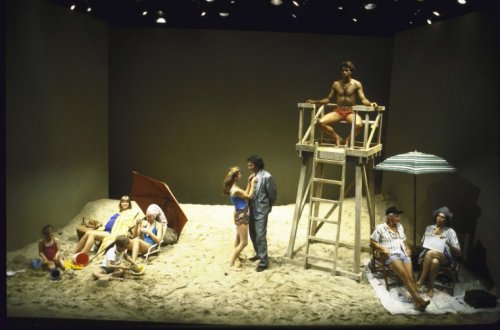
Annette Bening and Timothy Daly’s careers were ignited by appearing in underrated playwright Tina Howe’s beautiful beach study, Coastal Disturbances as directed by Carole Rothman, that ran for nine months in 1987.
The roster of shows produced from 1972 to 1997 by artistic director Theodore Mann and managing director Paul Libin’s are impressive and their achievements are worthy of recognition. They are kindred with such prominent figures as Eva Le Gallienne, John Houseman and Tony Randall who all made noble attempts at establishing an American national theater. In hindsight, it arguably existed in spirit for a time at the Circle in the Square.
